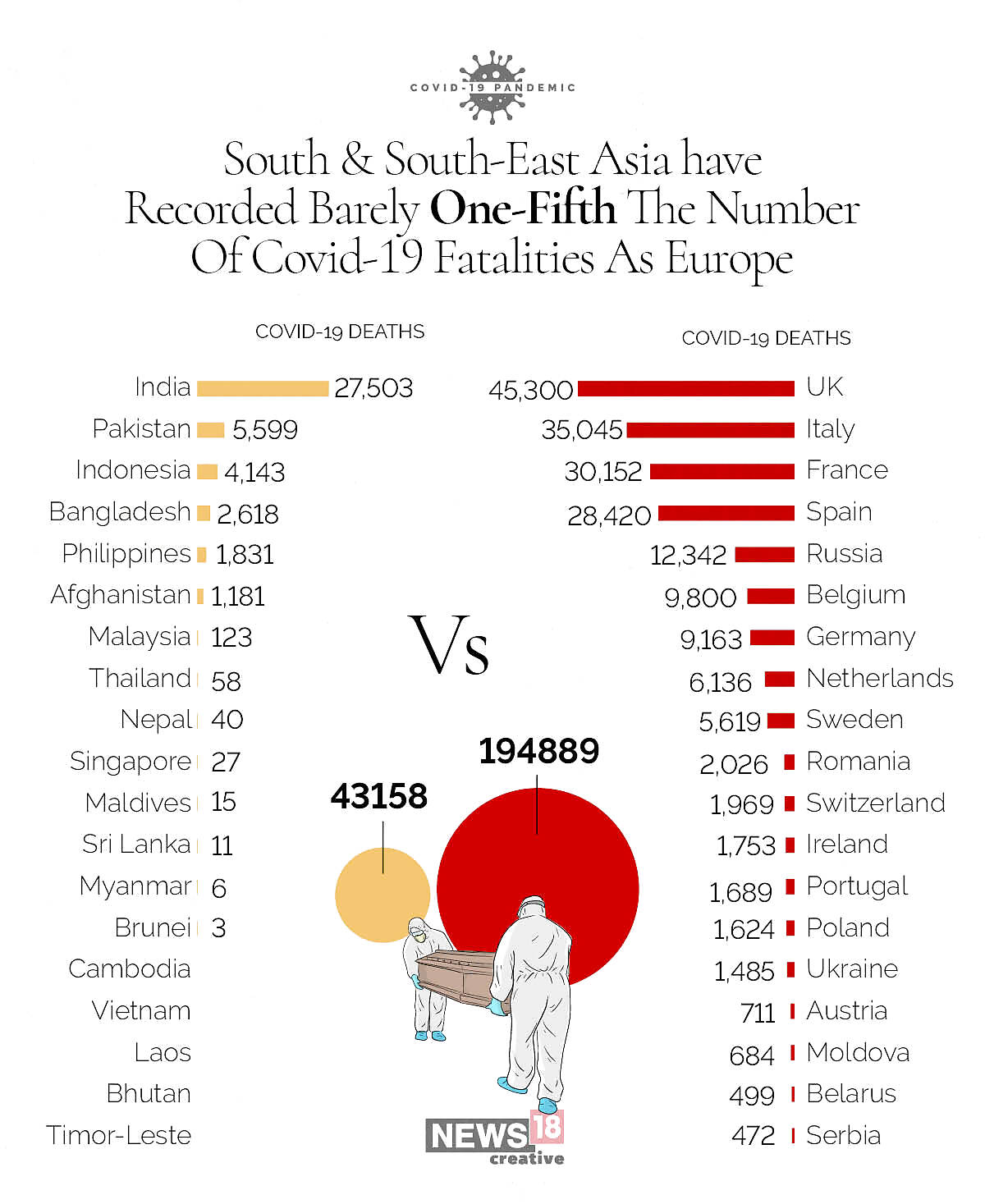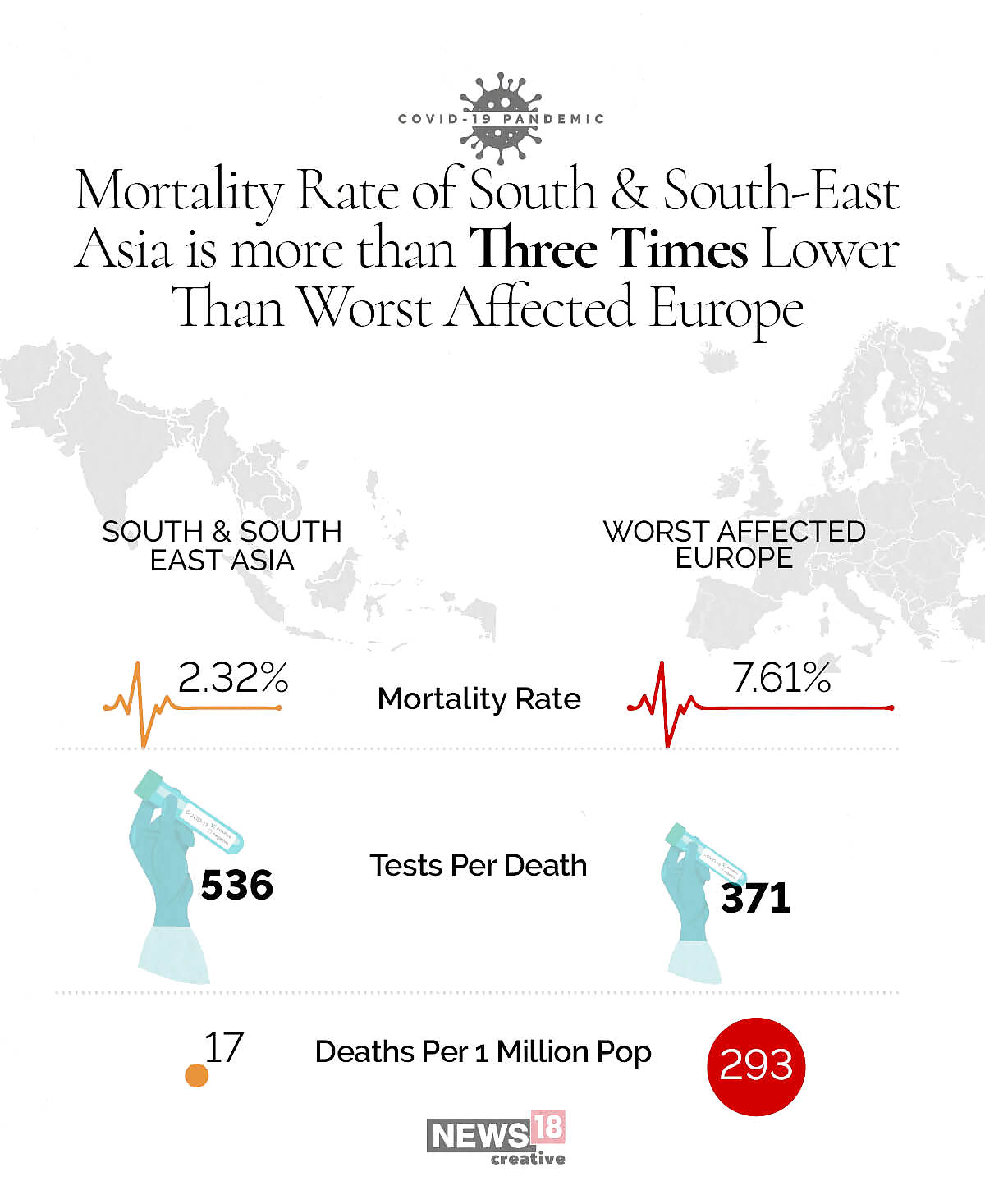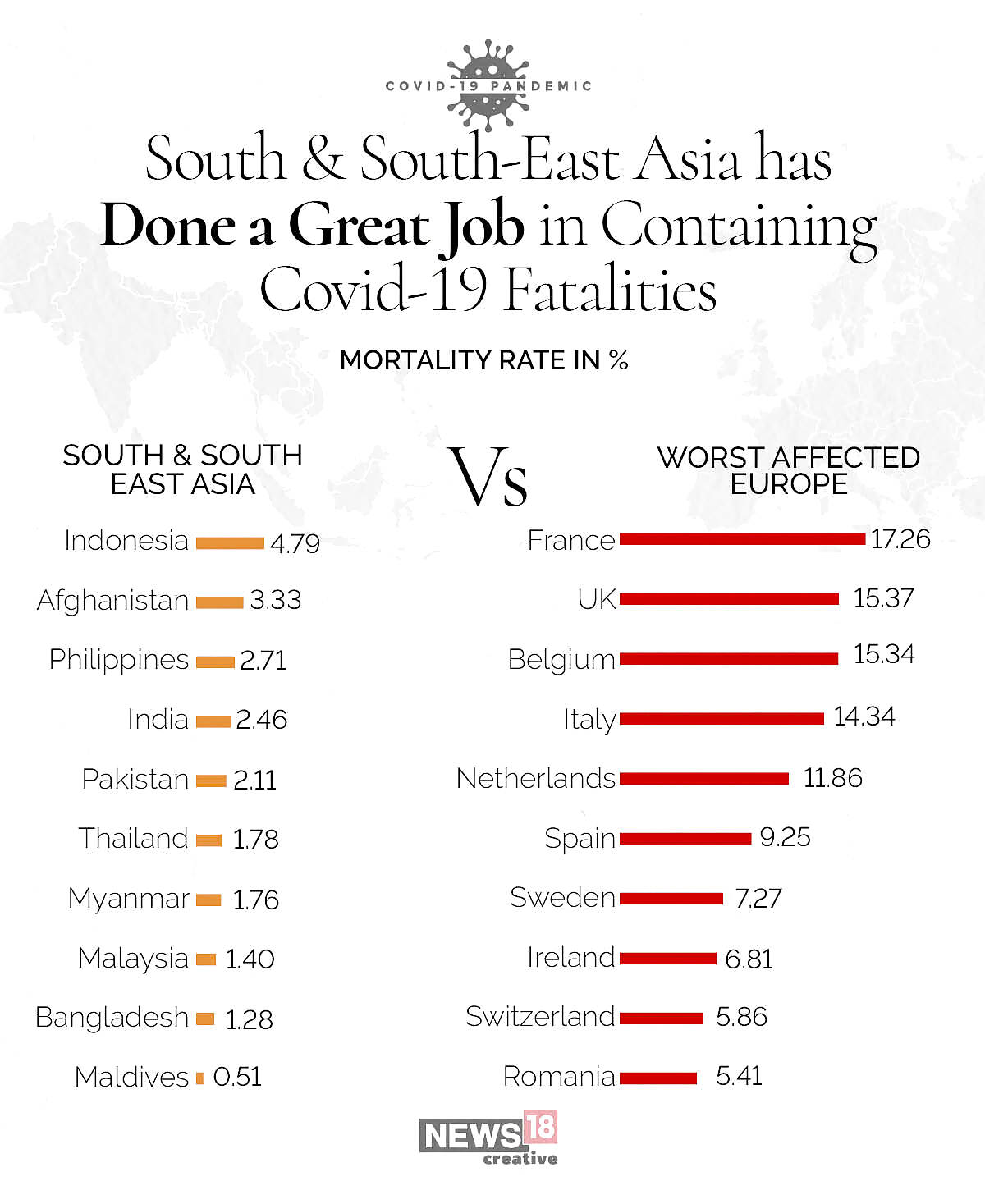
views
The region accounts for nearly one-third of the world’s population and includes four of the 10 most populous countries of the world. Add to that its density and economic and socio-political challenges and yet South and South-East Asia (SSEA) has done a remarkable job in containing Covid-19 deaths.
The 19 nations of the region, with a population of over 252 crore, have reported just 43,158 Covid-19 fatalities.
Compare this with the 1,94,889 deaths reported from the 19 worst-hit European nations, with a total population of approximately 66.5 crore.
In effect, this means that SSEA with close to four times the population of these 19 European nations, accounts for barely a little over one-fifth (22.14%) of the corresponding Covid-19 deaths.

India alone accounts for 64 per cent of the total number of deceased in SSEA. This means the remaining 18 countries in the region together account for just 15,655 Covid-19 deaths.
Thailand, with a population of almost 7 crore, has recorded just 58 Covid-19 fatalities. Sri Lanka has done a great containment job with just 11 reported deaths. Countries such as Cambodia, Vietnam, Bhutan and Laos are among the few countries in the world with no fatalities.
In sharp contrast, the mortality numbers in UK, Italy and France are in excess of 30,000. Spain is not far behind.
In terms of Deaths Per 1 Million Population, which is a more accurate measure of the spread of the virus in a country, there is a colossal difference between the two regions. While SSEA has recorded just 17 deaths per 1 million, the corresponding number is more than 17 times for the European region under analysis.
Afghanistan, which is the worst in SSEA on this count, has reported 30 deaths per one million population. The corresponding number for India is 20, Bangladesh – 16, Indonesia – 15, Singapore – 5 and Malaysia – 4. For Thailand, Sri Lanka and Myanmar, the ratio is less than 1 – that is how successful they have been in controlling the number of deceased due to Covid-19.
On the other end of the spectrum, Belgium has recorded 845 deaths per 1 million population, UK – 667, Spain – 608, Italy – 580, Sweden – 556, France – 462 and Germany – 109. Ukraine, with 34 deaths per one million population, has comparatively fared the best amongst the considered European nations.
So, in a nutshell, the worst SSEA nation has a lower death-population ratio than the best European nation on this count.

Overall, SSEA’s Mortality Rate (MR) is more than three times lower than Europe.
Indonesia, with 4.79 per cent, has the highest MR in SSEA. Afghanistan has an MR of 3.33 per cent and is followed by Philippines – 2.71 per cent, India – 2.46 per cent and Pakistan – 2.11 per cent.
Thailand, Myanmar, Malaysia and Bangladesh all have an MR of between 1 and 2 while Maldives, Sri Lanka, Nepal and Singapore have an MR of less than 1.
Comparisons with the worst –affected European nations give startling results. Nations like France, UK, Belgium and Italy have an MR of in excess of 14!

Even in terms of Tests Per Death, the Asian region has performed substantially better. Singapore has conducted more than 37,000 tests per death. The corresponding number for Myanmar is 17,083, Sri Lanka – 12,491, Thailand – 10,408, Malaysia – 7,234, Philippines – 624, India – 511, Pakistan – 311 and Indonesia – 295.
The East European nations have generally performed better than the more developed Western powers on this parameter – Belarus has conducted 2,391 tests per fatality, Russia – 2046, Poland – 1,193 and Serbia – 1,165.
In contrast, the corresponding ratio for UK is 293, Spain – 212, Italy – 178, Belgium – 147 and France – 87.
There are many possible reasons being attributed to the low mortality numbers in South and South East Asia.
One of the most plausible is the average age of population. India has a very high percentage of the young (53 per cent below 30 years of age) and a very low percentage of the above-65 population (6 per cent). The median-age of India is just 27. Most of the other countries in the region have a similar age-median – Pakistan – 23, Bangladesh – 28, Myanmar – 28, Bhutan – 28, Vietnam – 31, Indonesia – 30, Philippines – 26 and Sri Lanka – 34.
In comparison, Italy has a age-median of 46, France – 42, UK – 40, Belgium – 42 and Spain – 45. Italy, Spain, France, UK, Germany, Sweden and Belgium all have approximately a fifth of their population above 65.
Another common factor between the countries of South and South-East Asia is their geographical location: most lie between the Tropic of Cancer and the Equator with a hot and humid tropical weather which suggests a connection between temperature and mortality. It cannot just be a coincidence that some of the worst Covid-19 mortality rates are prevalent in countries with a colder climate who were hit by the virus in winter.
Other local factors may have played a part too. In India, an early and strict lockdown, a large percentage of the rural population and the BCG vaccine are some of the other possible reasons that a country of 138 crore has such low mortality numbers.
Thailand has been a remarkable story. The country saw a large number of tourists at the beginning of the year from some of the worst-hit Covid-19 countries in Europe and yet managed to keep the mortality numbers to below 60! One of the biggest reasons for this is being attributed to the social distancing rooted in Thai culture and their ‘non-physical contact’ way of greeting each other. This culture also prevails in the larger Mekong river region and could partially be responsible for the low death figures in Vietnam, Myanmar, Cambodia and Laos.
Coupled with this were factors like a predominantly outdoor lifestyle, early implementation of face masks and a fine health care system which helped Thailand to contain the number of deceased.
Sri Lanka has also done a tremendous job in controlling the spread of the virus. Decisive planning and preparations and an effective lockdown, early diagnosis, and meticulous contact-tracing were some of the steps that aided the island nation to control the pandemic. It also helped that the country has just one international airport.
Despite sharing a 1300-km long border with China, Vietnam has reported just 383 cases and amazingly, no Covid-19 related deaths! Early detection and contact tracing and the experience of dealing with SARS in 2003 were instrumental in the nation’s success against the pandemic.
The exact reasons will only be known with more data and analysis and as the world learns more about the virus.
But whatever they might be, it is almost a miracle that a region with such high levels of population, poverty and other challenges, has managed to effectively prevent deaths when some of the most advanced, rich and developed nations have failed.


















Comments
0 comment